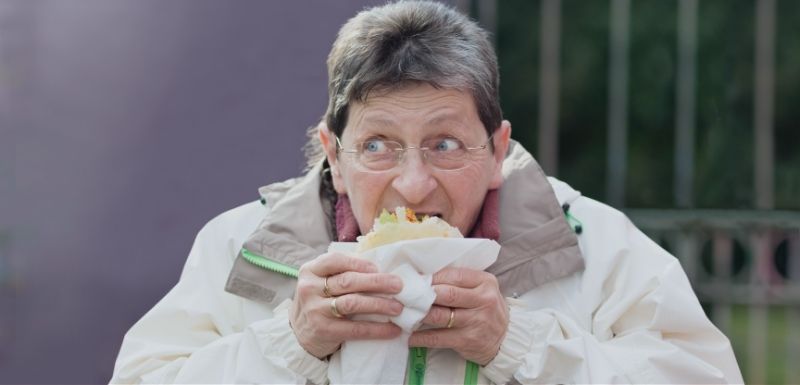No sé and no lo sé are the most common ways to say I don’t know in Spanish. They come from the verb saber (which means to know).
When you’re learning Spanish, not knowing is an experience you have often. So to make it crystal clear, let’s break down this expression, and take a look at the other (sometimes more colorful) ways you can express uncertainty in Spanish.
No sé vs. No lo sé
What’s the difference between no sé and no lo sé?
They both mean “I don’t know”, so why do you hear both?
Well literally, no lo sé means I don’t know it. This sounds a bit awkward in English — we don’t typically use that sentence structure.
It happens often that common phrases, idioms and expressions (like “I can’t wait”) can’t be translated literally
Even though “I don’t know it” sounds funny in English, in Spanish, no lo sé is very common.
When do you use no lo sé vs. no sé?
- Use no lo sé when you’re referring back to something already discussed.
- For example:
- ¿Por qué el cielo se ve azul? (why is the sky blue?)
- No lo sé
- ¿Cuando llega tu mamá? (when is your mom arriving?)
- No lo sé
- Use no sé in all other cases — when you’re not referring to something already discussed, or you’re talking about something non-specific.
- For example:
- No sé qué voy a cocinar esta noche (I don’t know what I’m going to cook tonight)
- Iba a ir a la fiesta, pero ahora no sé… (I was going to go to the party, but now I don’t know)

Like with everything in the Spanish language, you’ll hear “no lo sé” more often in some countries than others. But the guidelines above still apply broadly, and you’ll be understood regardless of which one you say.
What about yo no sé or yo no lo sé?
In the examples above, why is the yo (I) omitted?
The nice thing about Spanish conjugations is that they tell you who is speaking — so it’s not usually necessary to use a pronoun to say who is speaking. Instead, pronouns get used mainly for emphasis.
No sé already contains the information meaning “I don’t know”. So when you include yo, you are emphasizing that it is you (not someone else) who doesn’t know.
For example:
- Papá: ¿Quién comió mi sandwhich?
- You: Yo no sé, pero él sí (I don’t know, but he does — pointing at your brother)

I don’t know either
Sometimes, nobody knows squat— nadie sabe nada.
When that happens, and you want to say “I don’t know either”, you can say:
- Tampoco sé
- No sé tampoco
Tampoco means either/neither.
For example:
- Profesor: Bueno clase, quien puede decirme cuál es la capital de Australia? Juan, lo sabes tú?
- Ok class, who can tell me the capital of Australia? Juan, do you know?
- Juan: No sé profe
- Profe: Y Daniela, sabes cuál es la capital de Australia?
- Angélica: Tampoco sé
I didn’t know in Spanish
Even if you’re a complete beginner in Spanish, and have perhaps been told that you’re not quite ready for the past tense yet, it’s still worth learning some set phrases in the past.
“I didn’t know” is one of those phrases! It’s extremely useful regardless of your level.
Luckily, there is one reliable way to say “I didn’t know”: “No sabía”.
Yo sabía is the 1st person “imperfect” of the verb saber. If you’re a beginner, you don’t need to worry about what the imperfect is right now. Just know that (yo) sabía means I knew, and (yo) no sabía means I didn’t know.
The difference between No sabía and no lo sabía is the same as the difference between no sé and no lo sé: the “lo” refers to something previously discussed.
When in doubt, just skip the “lo” and say no sabía.
Note: Sometimes you don’t use saber at all!
If what you don’t know is a person, place, or thing — aka, you’re not familiar with it — you use conocer. This is a topic of its own, but here’s a quick example:
- Quién es ese tipo?
- Who’s that guy?
- No sé (I don’t know)
- Conoces a ese tipo? (Do you know that guy?)
- No, no lo conozco (No, I don’t know him)
For more on this topic, check out this video I made: Saber vs. Conocer: understand the difference in 4 minutes
Other ways to say I don’t know in Spanish
Besides no sé, other expressions can also be used to express uncertainty in Spanish:

No estoy seguro
I’m not sure
- Ya no estoy seguro de nada
- I’m not sure of anything anymore
No tengo idea
I have no idea
- No tengo idea de qué vamos a hacer cuando lleguemos a Quito
- I have no Idea what we’re going to do when we get to Quito
Ni idea
No idea/no clue
- ¿Cómo es el clima en el noroeste de Mongolia? – Ni idea
- What’s the climate like in northwest Mongolia? – No idea
Qué sé yo
I don’t know/What do I know/how should I know
- Quería planear un recorrido de la ciudad, pero qué sé yo, es la primera vez que visito.
- I wanted to plan a tour of the city, but what do I know, it’s my first time here
- Eso debe costar, qué sé yo, unos mil pesos?
- That should cost, I dunno, around a thousand pesos?
*note that qué sé yo is an especially common expression in Argentina
Quién sabe
Who knows
- Cuánta gente va a estar en tu fiesta de cumpleaños?
- Quien sabe, depende del tiempo
- How many people are going to be at your birthday party? Who knows, it depends on the weather
When Other people don’t know
To describe when other people don’t know something, here’s how you’ll conjugate saber:
- No sabes – you don’t know
- No sabe – he, she, or usted doesn’t know
- No sabemos – we don’t know
- No saben – They or you all (ustedes) don’t know
Practice!
Now that you know lots of different ways to say “I don’t know” in Spanish, it’s time to practice!
Try to create 5 of your own sentences (say them out loud) using the expressions above.



 Saturday Spanish Newsletter:
Saturday Spanish Newsletter: